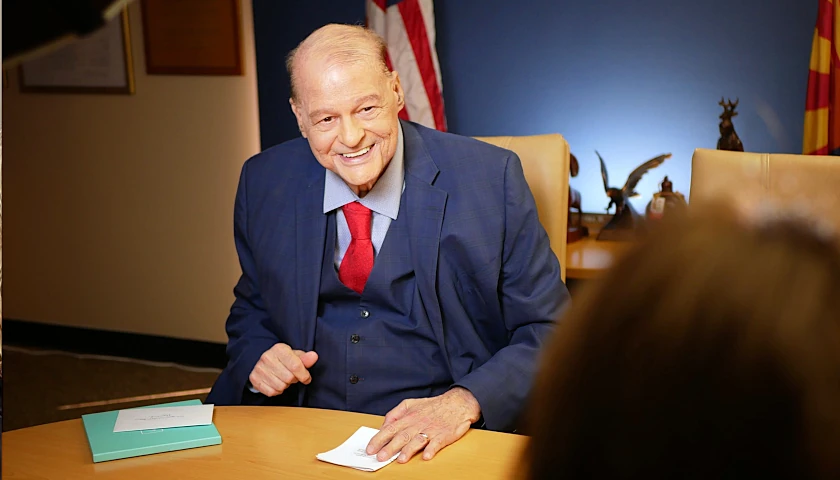by Madeline Armstrong
A recent report from the Fiscal Research and Education Center shows that school choice programs may save taxpayers money despite some Arizona politicians’ concerns about oversight of the statewide ESA program.
The report looked at 25 states plus the District of Columbia, including Arizona. The report looked at school choice programs through 2022, but since Arizona’s universal ESA program was not enacted until 2023, the report includes a separate fiscal analysis looking at the impacts of Arizona’s universal ESA program from 2023 through 2024.
“This report includes a separate fiscal analysis of this program and estimates that the short-run net fiscal effects on state and local taxpayers combined were $37 million net costs in FY 2024,” reads the report. “This represents 0.2% of taxpayer support for Arizona’s K–12 public schools and just 0.05% of the state’s total budget for all public services. We estimate that over the long term Arizona’s ESA program will lead to annual net fiscal savings of $244 million. These results call into question claims that education choice is ‘blowing a hole’ in the state’s budget.”
The report found that ESA programs actually save the government money as the vouchers given out are less than the amount of taxpayer money spent per student at public schools. The ESA cost per student is $9,736, only 66% of the cost per student in public K-12 schools.
“Prior to the consideration of savings, the total expenditure of the ESA program for the state is about $730 million,” reads the report. “This amount represents 0.9% of all other state funded public services.”
According to the report, critics claim that oftentimes students who receive ESAs are already enrolled in private schools, meaning that it adds to the state’s education costs. The Arizona Department of Education has calculated that about 47% of students in the ESA program were formerly enrolled in public schools, making them a “switcher,” and consequently, saving the state money. However, it states in the report that this data does not take into account Arizona’s four other tax credit scholarship programs that students could have switched from.
As of 2022, Arizona had supplied non-universal ESA vouchers since the program’s inception to 480,657 students, for the Low-Income Corporate Income Tax Credit Scholarship Program, 252,930 students, for the Lexie’s Law for Disabled and Displaced Students Tax Credit Scholarship Program, 9,423 students and for the Switcher Individual Income Tax Credit Scholarship Program, 120,856 students. Additionally, Arizona accounts for almost 15% of all students enrolled in school choice programs nationwide.
After taking into consideration the students that were potential switchers from the tax-credit scholarship programs, the report concludes that an estimated 48,519 out of 74,996 ESA students are switchers.
The report also notes that more than half of the students in Arizona’s ESA programs had special needs, which saves the state money as comprehensive care for students with disabilities can often be costly and benefits the child to ensure that they are receiving the specialized education they need.
“State and local taxpayers enjoy nearly $225 million in short-run benefits from ESA students with disabilities switching from the public school system,” reads the report. “The long-run fiscal benefits for state and local taxpayers not educating ESA students with disabilities in the public school system is more than $260 million.”
The fiscal benefits for students without disabilities who are using the ESA program is even greater.
“The combined short-run fiscal benefits are nearly $700 million,” reads the report. “The long-run fiscal benefits from ESA students without disabilities who are switchers is $712 million. The combined long-run fiscal benefits is nearly $975 million.”
The report notes that while public schools are likely not seeing an impact in the year since the universal ESA program was enacted, there will be long-term benefits as enrollment rates decline and the state education budget is adapted.
“Over time, districts will be able to reduce educational expenses by cutting costs in response to having to care for fewer students,” reads the report. “Reductions in educational costs means lower property taxes that Arizona households must pay to support K–12 public schools. Alternatively, if districts choose not to reduce spending given their lower costs, then students who remain will have access to more resources on a per-pupil basis. Furthermore, both participants in choice programs and those remaining in public schools may experience benefits such as academic improvements, learning gains, and enhanced civic engagement.”
– – –
Madeline Armstrong is a contributor to The Center Square.





